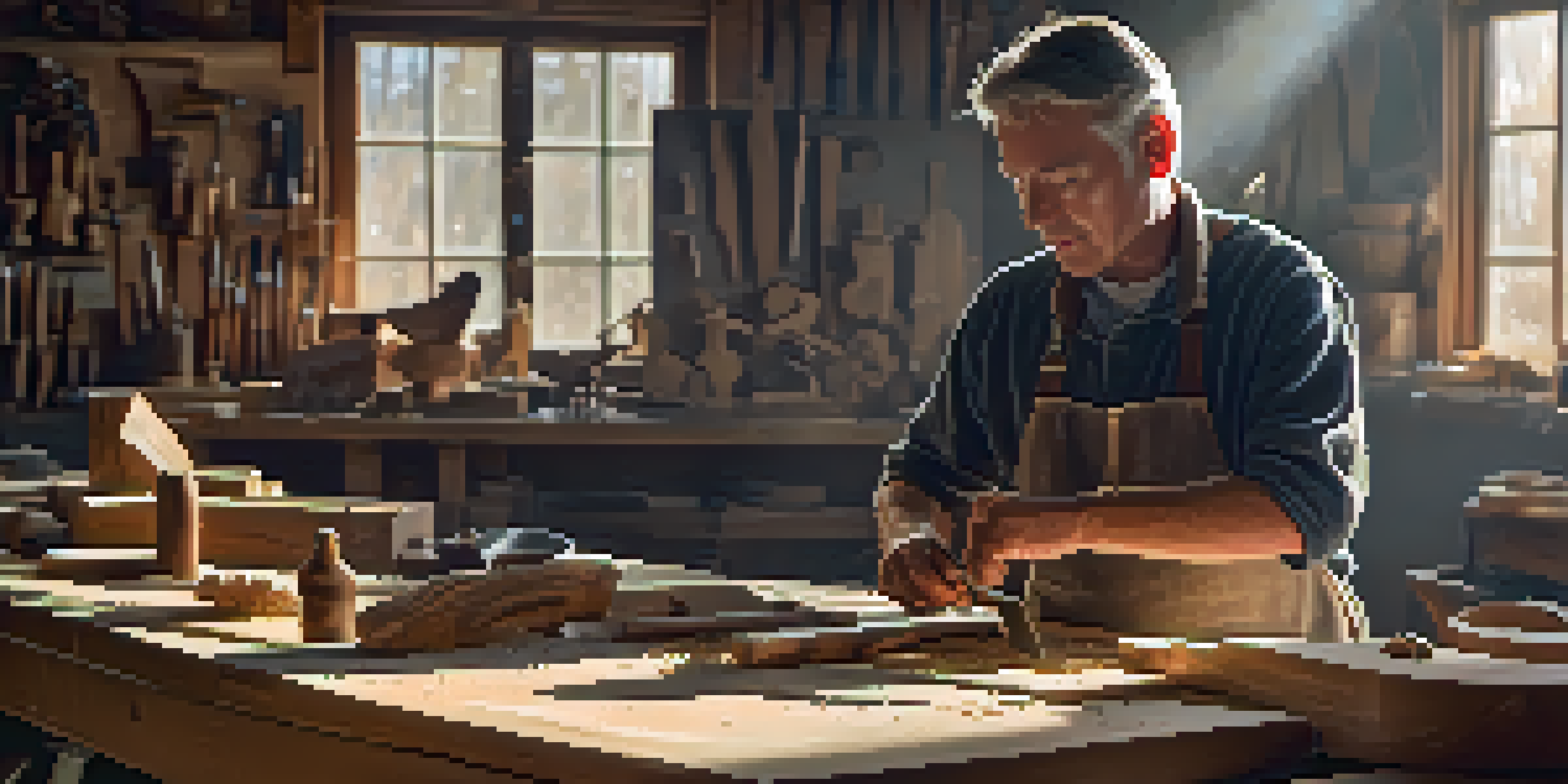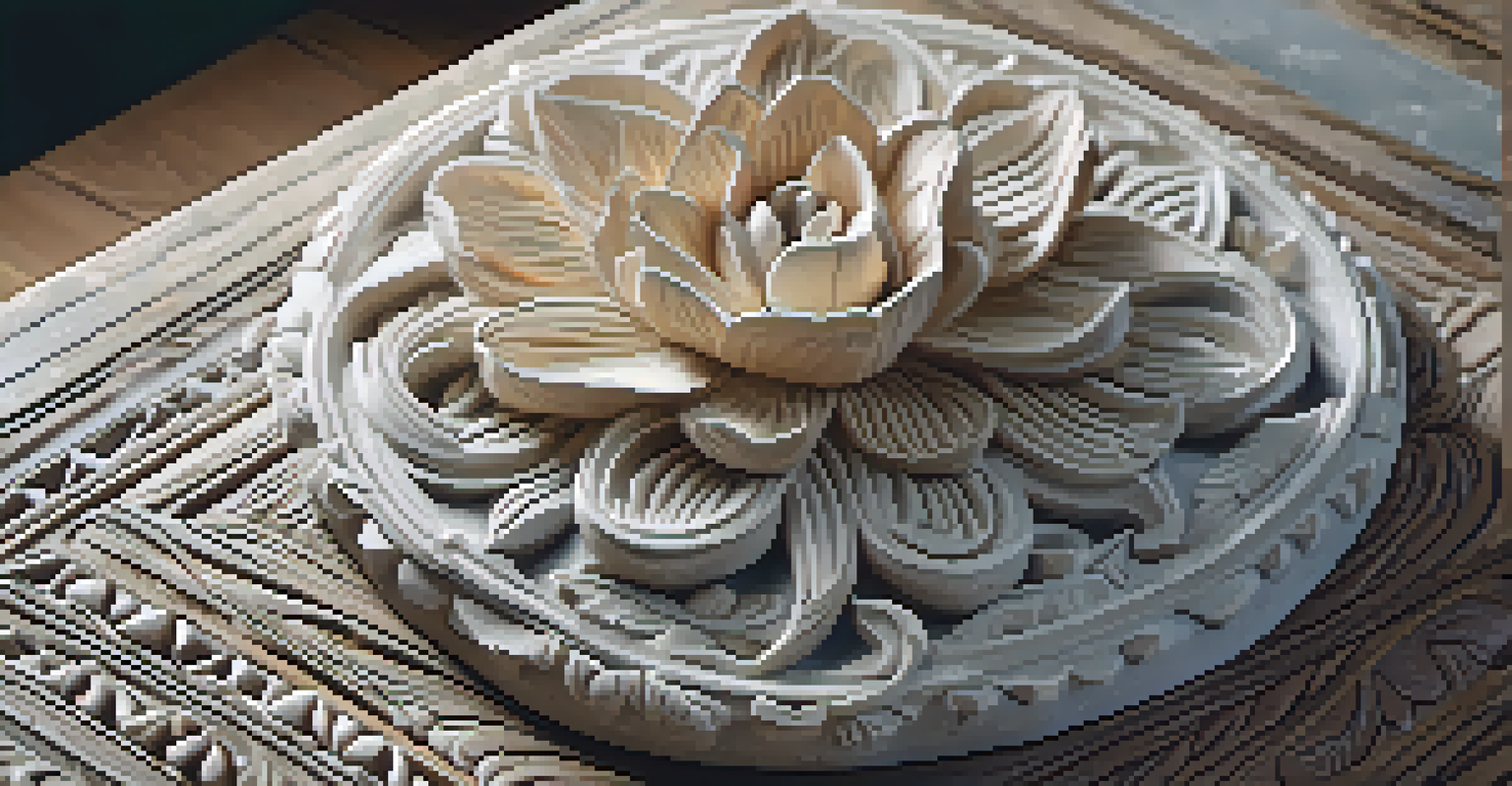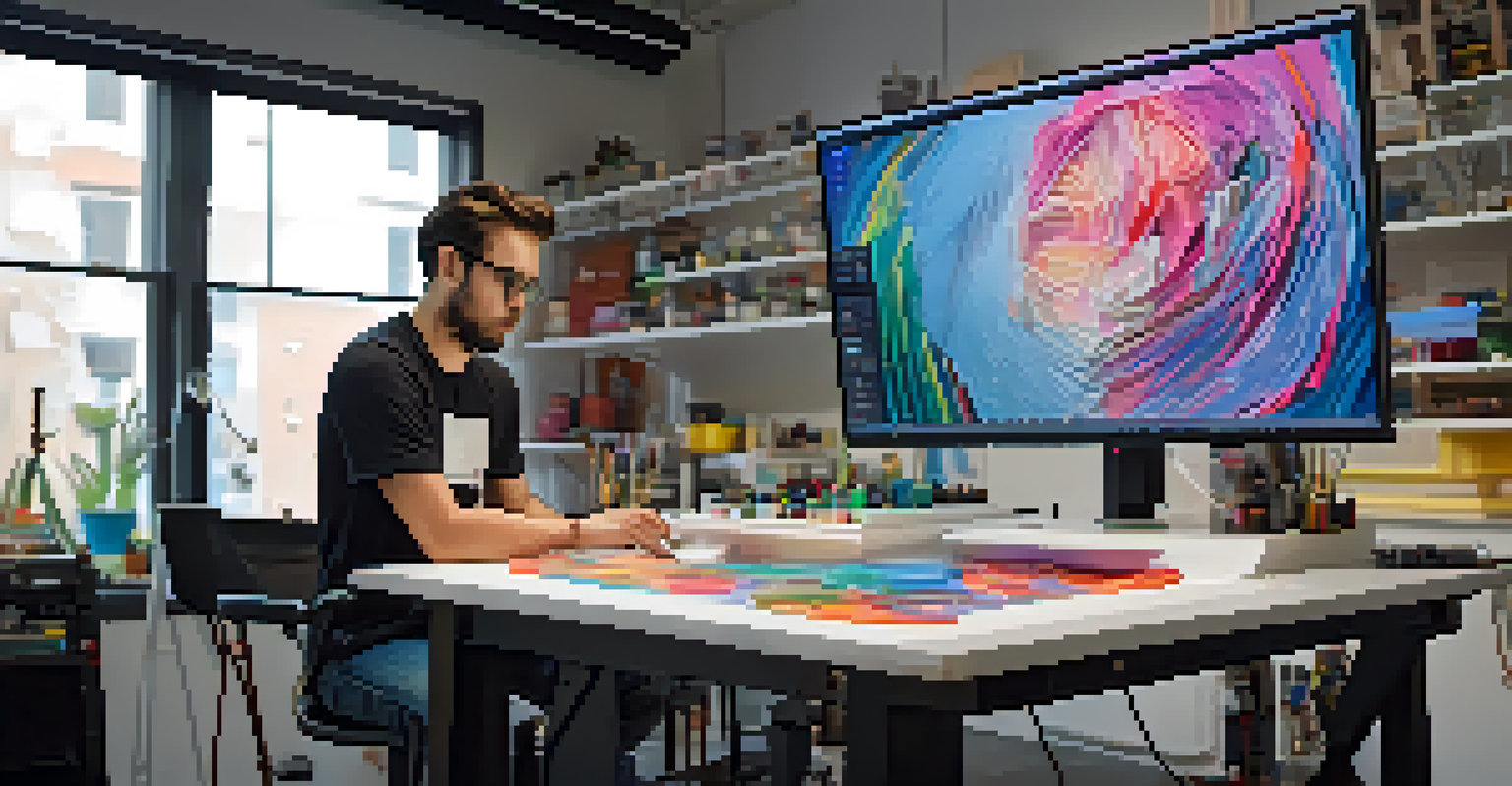The Intersection of Digital Technology and Carving Art Forms

Understanding Carving Art Forms in a Digital Age
Carving art forms have a rich history, often rooted in cultural traditions and skilled craftsmanship. These art forms, which include wood carving, stone sculpture, and more, rely heavily on tactile skills and a deep understanding of materials. However, the advent of digital technology is reshaping how artists create and visualize their work, blending traditional techniques with modern innovations.
Art is not freedom from discipline, but disciplined freedom.
Digital tools like 3D modeling software and CNC (Computer Numerical Control) machines are revolutionizing the way artists approach their craft. For instance, artists can now create intricate designs on their computers, allowing for precision and complexity that might be challenging by hand. This fusion of digital and physical artistry not only expands creative possibilities but also invites new audiences to appreciate the craft.
Moreover, the accessibility of digital tools means that aspiring artists can learn and practice carving techniques without needing extensive resources. Online tutorials and software applications provide a gateway for anyone interested in exploring this art form, democratizing the creative process and fostering a community of innovative artists.
The Role of 3D Printing in Carving Art
3D printing has emerged as a game-changer in the carving art landscape, allowing artists to produce complex shapes and forms that would be difficult to achieve through traditional methods. With 3D printers, artists can create prototypes or full-scale models of their designs, facilitating experimentation and iteration before committing to the final piece. This technology opens up a new realm of artistic expression that combines the digital and physical worlds seamlessly.

One fascinating example is the use of 3D-printed molds for carving intricate patterns in stone or wood. Artists can design a unique mold digitally, print it, and then use it as a guide for carving, achieving higher precision and reducing material waste. This method not only enhances the quality of the final product but also aligns with sustainable practices, which many contemporary artists are prioritizing.
Digital Tools Transform Carving Art
The integration of digital technologies like 3D printing and VR is reshaping how artists create and visualize their work.
As 3D printing technology continues to evolve, its integration into carving art forms will likely inspire even more innovative techniques and styles. Artists are already experimenting with hybrid forms, blending traditional carving with contemporary digital designs, leading to a dynamic evolution of the craft.
Virtual Reality: A New Dimension for Carving Artists
Virtual Reality (VR) is another exciting frontier for carving art, providing immersive experiences that allow artists to carve in a digital space. With VR headsets, artists can manipulate virtual materials, mimicking the tactile experience of carving without the physical limitations of real-world materials. This technology not only enhances artistic freedom but also offers a playful way to explore forms and designs.
The best way to predict the future is to create it.
Imagine stepping into a virtual workshop where you can sculpt and carve without the constraints of gravity or material costs. Artists can experiment with scale, texture, and form, gaining insights that might not be possible when working only with physical media. This type of experimentation can lead to unique artistic outcomes, bridging the gap between the artist's vision and the final product.
Moreover, VR can serve educational purposes, allowing students and aspiring artists to learn carving techniques in an interactive environment. By simulating the carving process, learners can practice their skills without the fear of making mistakes, fostering a more explorative attitude toward art.
The Impact of Social Media on Carving Art Communities
Social media has transformed how carving artists connect, share, and showcase their work. Platforms like Instagram and TikTok allow artists to reach wider audiences, gaining recognition beyond their local communities. This visibility can lead to new opportunities for collaboration, sales, and exposure to diverse artistic influences from around the world.
Artists often share their creative processes online, providing insights into their techniques and inspirations. This transparency not only fosters a sense of community but also encourages others to engage with carving art, whether as creators or enthusiasts. The ability to receive feedback and encouragement from peers can significantly enhance an artist's development and confidence.
Sustainability in Carving Practices
Many contemporary artists are prioritizing sustainable practices by using eco-friendly materials and minimizing waste through digital tools.
Additionally, social media serves as a platform for showcasing innovative projects that blend traditional carving techniques with digital technologies. Artists can inspire one another, sparking trends that push the boundaries of what carving art can be, keeping the art form vibrant and relevant in today's fast-paced digital landscape.
Sustainable Practices in Digital Carving Art
As the intersection of digital technology and carving art evolves, sustainability is becoming a crucial consideration. Many artists are now looking for ways to minimize their environmental impact, from sourcing eco-friendly materials to utilizing digital tools that reduce waste. This shift is not only beneficial for the planet but also resonates with a growing audience that values sustainability in art.
Digital technology can play a significant role in promoting sustainable practices. For instance, artists can use software to optimize designs, ensuring that material use is efficient and waste is minimized. Furthermore, 3D printing allows for the use of biodegradable materials, which can be a more sustainable alternative to traditional carving materials.
By embracing sustainable practices, carving artists can contribute to a more eco-conscious art community. This commitment not only enhances their artistic narrative but also inspires others to consider the environmental implications of their creative processes.
The Future of Carving Art in a Digital World
The future of carving art appears bright as digital technologies continue to advance. Artists are increasingly blending traditional techniques with modern tools, creating a unique fusion that respects the past while embracing the future. This evolution suggests that carving art will not only endure but thrive as it adapts to new mediums and methods.
As technologies like augmented reality (AR) and artificial intelligence (AI) develop, they will likely introduce even more innovative possibilities for carving artists. Imagine using AR to visualize how a carving would look in a specific space before even starting the project, or leveraging AI to generate design ideas based on an artist's style. Such enhancements could revolutionize the creative process, making it more efficient and inspiring.
Social Media Connects Carving Artists
Platforms like Instagram and TikTok enable carving artists to share their work widely, fostering community and collaboration.
Ultimately, the intersection of digital technology and carving art reflects a broader trend in the arts: the continuous evolution and adaptation to new influences. As artists embrace these changes, carving art will undoubtedly continue to captivate audiences and inspire future generations of creators.
Conclusion: Embracing Change in Carving Art Forms
The intersection of digital technology and carving art forms signifies a pivotal moment in the evolution of artistry. By embracing digital tools and innovative practices, carving artists are not only enhancing their craft but also ensuring its relevance in contemporary culture. This journey of adaptation invites both seasoned artists and newcomers to explore the limitless possibilities of carving art.
As artists continue to experiment with digital technologies, they will likely discover new forms of expression that challenge traditional boundaries. This spirit of exploration is essential for the growth of any art form, fostering creativity and inspiring fresh perspectives. The blending of digital and traditional methods offers an exciting landscape for artistic exploration.

In conclusion, the future of carving art is an exciting frontier filled with potential. As we move forward, artists and audiences alike can look forward to witnessing the continued innovation and transformation of carving art, celebrating the beauty that arises from the fusion of tradition and technology.